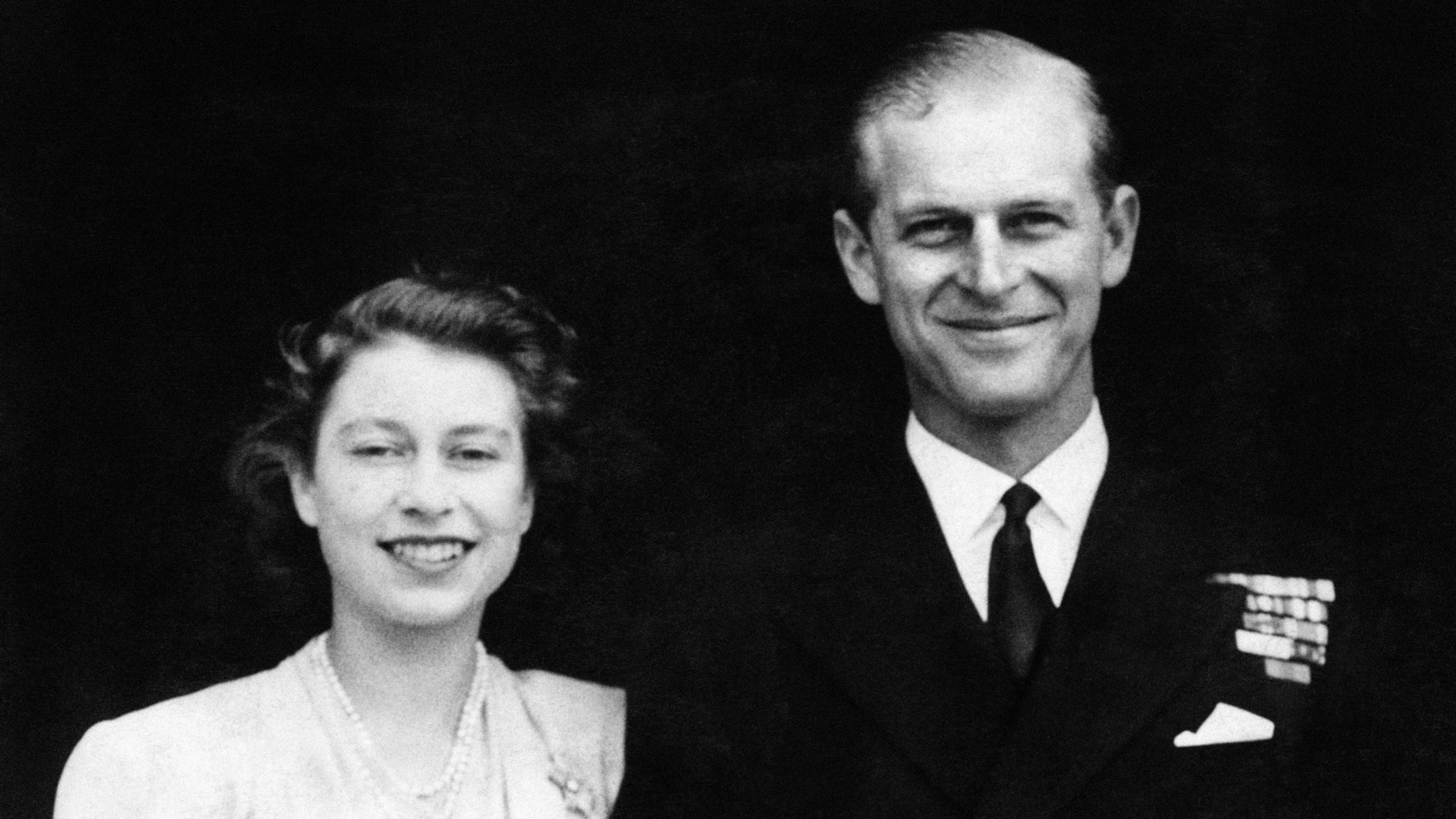
Alone in a pew, an empty seat beside her for the first time in 73 years, the Queen mourned her husband Prince Philip yesterday, at the funeral of the man she called her “strength and stay”.
It was a royal funeral like no other, with pandemic restrictions curtailing the guest list and pageantry, but, beneath blue skies in Windsor, 30 of his closest family and friends gathered to grieve the Duke of Edinburgh, after his death nine days ago at 99.
A ceremony, coloured by his love of the sea and the Royal Navy, had no sermon as he requested, but the Dean of Windsor paid tribute to the Duke’s “kindness, humour and humanity”.
Scotland, like the rest of the UK, marked a minute’s silence at 3pm, before the service started, with First Minister Nicola Sturgeon leading the country’s tributes. She said:
“Today, as the Queen and the royal family mourn the death of a loved one, we take this opportunity to celebrate and honour an extraordinary life.”
Dressed in black and wearing a face mask, the Queen’s arrival at the service was the first time she has been seen in public since her husband died eight days beforehand.
Ongoing restrictions due to the pandemic had reduced the scale of yesterday’s service, with public elements cancelled and the number of mourners reduced from about 800 to just 30.
Instead, an intimate service at Windsor Castle was held, conducted by the Dean of Windsor, who paid tribute to the “unwavering loyalty” Prince Philip had shown to the Queen, who sat alone during yesterday’s service, distanced from family members, with her head bowed.
Every minute of the funeral was planned with military precision and was in keeping with Prince Philip’s wishes. The Duke’s final journey began at 2.45pm, with a procession that took eight minutes and which set off from the State Entrance at Windsor Castle.
After a lifetime spent standing a dutiful two steps behind the Queen, Prince Philip yesterday took precedence, his coffin travelling in front, draped in his personal standard, atop it his naval hat and sword and a wreath of white lilies and white roses from his wife.
Walking behind the coffin, in morning suits and dress and, as per the Queen’s instructions, with medals but not uniform, were Prince Philip’s eldest children the Prince of Wales and Princess Royal, followed by their siblings the Earl of Wessex and Duke of York.
Behind them, the Duke of Sussex and Duke of Cambridge followed, the two brothers, their troubled relationship well documented, separated by their cousin Peter Phillips. The Princess Royal’s husband, Vice- Admiral Timothy Laurence, and the Queen’s nephew, the Earl of Snowdon, were also in the procession.
Travelling behind them in a state Bentley, was the Queen, accompanied by Lady-in-Waiting Lady Susan Hussey.
In a touching moment, Prince Philip’s cap, gloves and whip were laid out on the seat of a dark-green four-wheeled carriage, which yesterday stood in the quadrangle of Windsor Castle as the Duke’s coffin was carried past.
The Duke was known for his love of carriage driving and the vehicle was his most recent carriage, which he began using at the age of 91 for riding around Windsor and other royal estates. With the carriage yesterday were the Duke’s two black Fell ponies, Balmoral Nevis and Notlaw Storm.
Representatives from the services were also in the castle’s quadrangle to show Philip’s military relationships. They included the Royal Navy, with whom the Duke served with distinction, Royal Marines, Grenadier, Coldstream and Welsh Guards, and The Highlanders, 4th Battalion, The Royal Regiment of Scotland.
Members of the royal family and Philip’s relatives who did not take part in the procession left Windsor Castle by car to make the journey to the chapel. As the procession left, the firing of minute guns by The King’s Troop Royal Horse Artillery from the East Lawn and the sound of the Curfew Tower Bell formed a sombre backdrop.
The Land Rover carrying the coffin arrived at the foot of the chapel’s West Steps at exactly 2.53pm. A Royal Navy piping party sounded as it stopped and pall bearers took their positions. After a pause, the coffin was carried up the steps until, at exactly 3pm, the coffin halted on the second landing and a gun fired by The King’s Troop Royal Horse Artillery signalled the start of the national minute’s silence.
The Dean of Windsor and Archbishop of Canterbury received the coffin, which was followed by members of the royal family who walked in the procession.
The coffin was placed on the catafalque, a platform to support it, in the quire of the chapel and members of the royal family took their places for the service.
In the bidding during the service, the Dean of Windsor said people would remember Prince Philip “with grateful hearts” and would recall the “many ways in which his long life has been a blessing to us”.
The Dean, The Right Reverend David Conner, said: “We have been inspired by his unwavering loyalty to our Queen, by his service to the nation and the Common-wealth, by his courage, fortitude and faith. Our lives have been enriched through the challenges that he has set us, the encouragement that he has given us, his kindness, humour and humanity.
“We therefore pray that God will give us grace to follow his example, and that, with our brother Philip, at the last, we shall know the joys of life eternal.”
The blessing was pronounced by the Archbishop of Canterbury Justin Welby. Musical pieces included Eternal Father, Strong to Save, followed by a passage from Ecclesiastes read by the Dean of Windsor.
The choir sang The Jubilate, O Be Joyful, written for St George’s Chapel at the request of the Duke.
A second lesson from the Book of John was followed by Psalm 104, the Duke having requested the words be set to music by William Lovelady. It was first sung in honour of Prince Philip’s 75th birthday.
Prayers were followed by a choral rendition of Russian Kontakion of the Departed.
The Dean gave the commendation and mourners stood in respect as the coffin was lowered into the Royal Vault beneath St George’s Chapel. Rt Rev Conner said: “May thy portion this day be in peace, and thy dwelling in the heavenly Jerusalem,” as Prince Philip’s interment took place.
The 30 mourners in the chapel, led by the Queen, stood for the solemn moment, which they watched from their places in the quire, and The Garter Principal King of Arms pronounced the titles and styles of the Duke for the final time. The Archbishop of Canterbury pronounced the blessing, before the national anthem was sung by four-strong choral group.
As mourners prepared to leave the chapel, a lament was played by Pipe Major Colour Sergeant Peter Grant, 33, of the Royal Regiment of Scotland. Speaking beforehand, he told of the “honour” he felt at performing such a role.
The Last Post was sounded by buglers of the Royal Marines from the west end of the nave. After a period of silence, the Reveille was sounded by the state trumpeters of the Household Cavalry from the west end of the nave. The buglers of the Royal Marines sounded Action Stations, a stirring tune once sounded on warships, at the specific request of the Duke of Edinburgh.
The Queen, members of the royal family and Philip’s relatives departed, with 15 members of the funeral party joining her in a reception at Windsor Castle’s State Apartments, in line with government guidelines.
Yesterday’s 50-minute service followed precise instructions left by Prince Philip, who died peacefully in his sleep at Windsor Castle on April 9 at the age of 99.
The Duke’s death left the monarchy grieving in private but, in the days prior to the funeral, they made public appearances to recognise the support and condolences they received throughout the difficult period from the nation.
In the run-up to the funeral, unseen photographs were released showing Prince Philip, sun hat perched on his knee, relaxing with his wife at Coyles of Muick, on the Balmoral Estate in 2003.

Enjoy the convenience of having The Sunday Post delivered as a digital ePaper straight to your smartphone, tablet or computer.
Subscribe for only £5.49 a month and enjoy all the benefits of the printed paper as a digital replica.
Subscribe © PA
© PA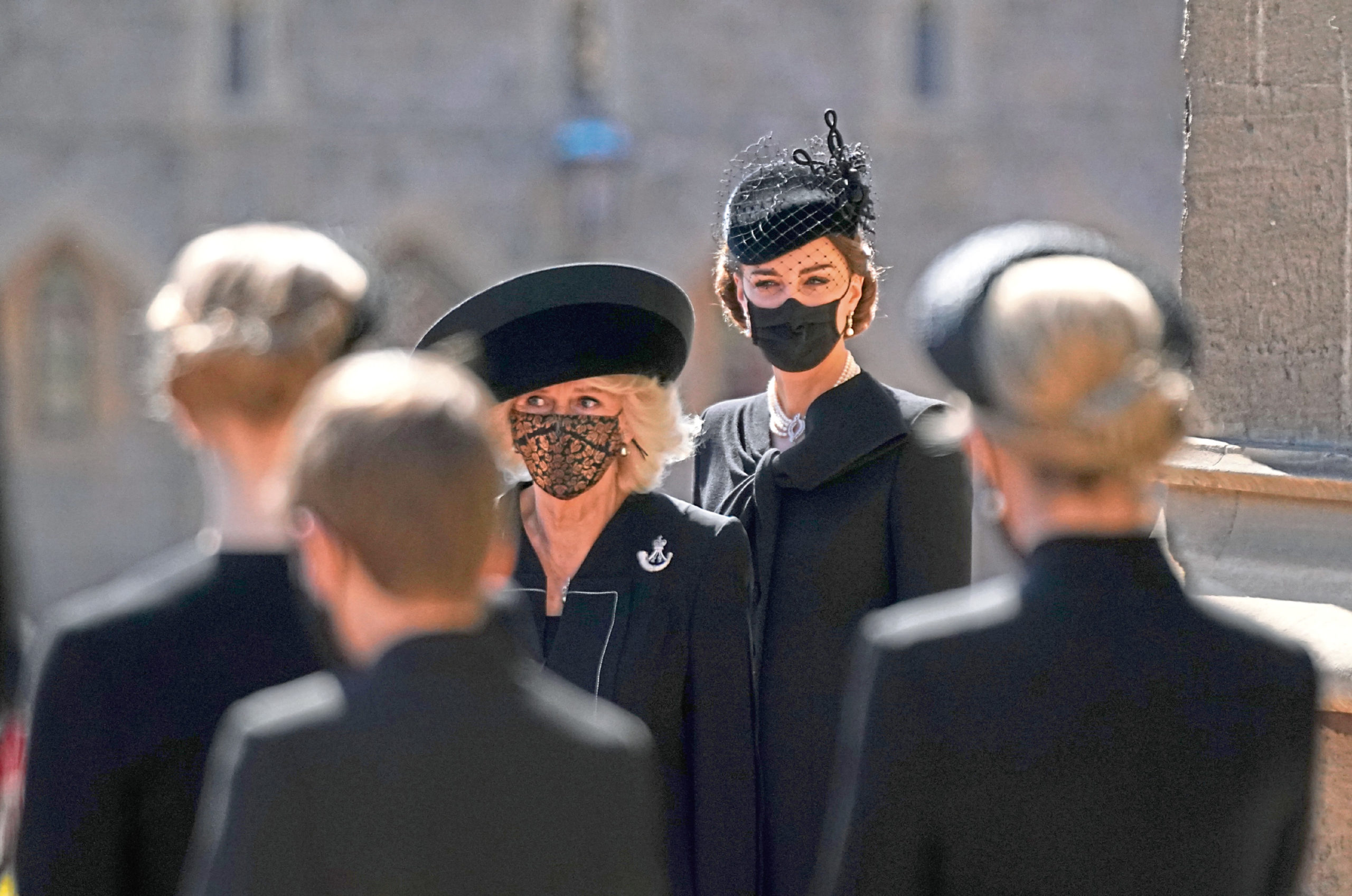 © PA
© PA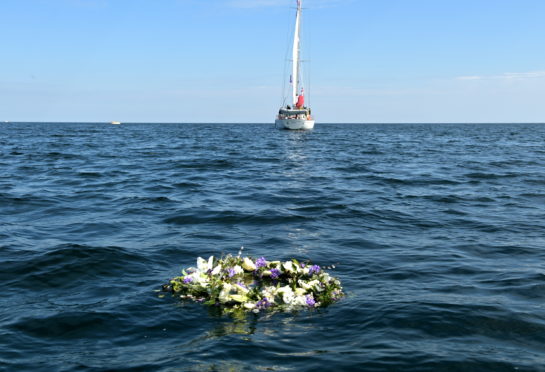
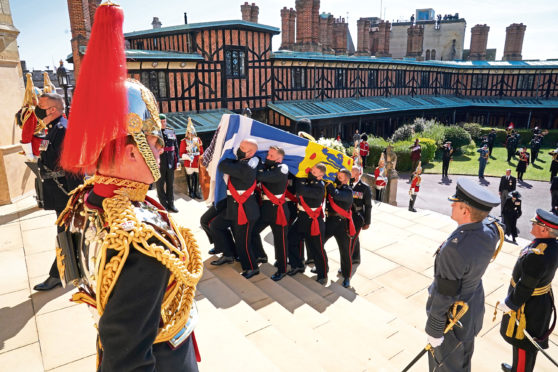
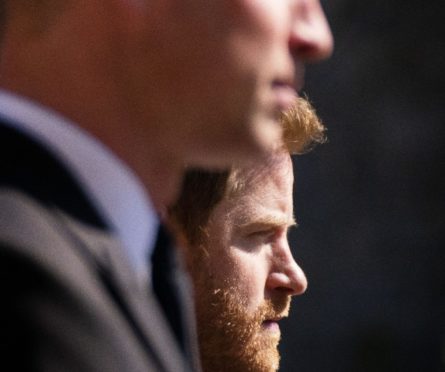
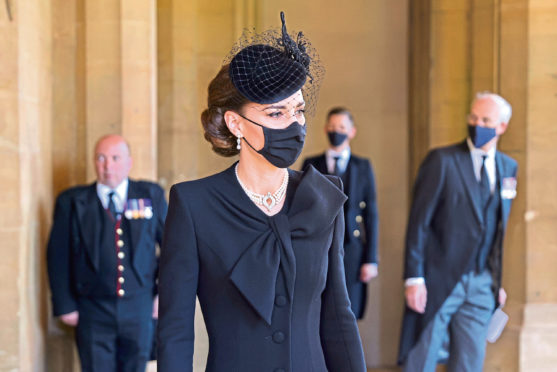
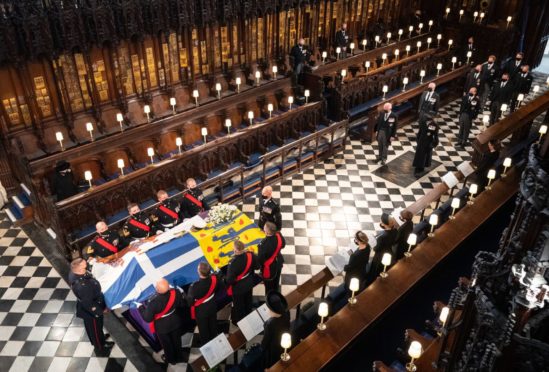
 © PA
© PA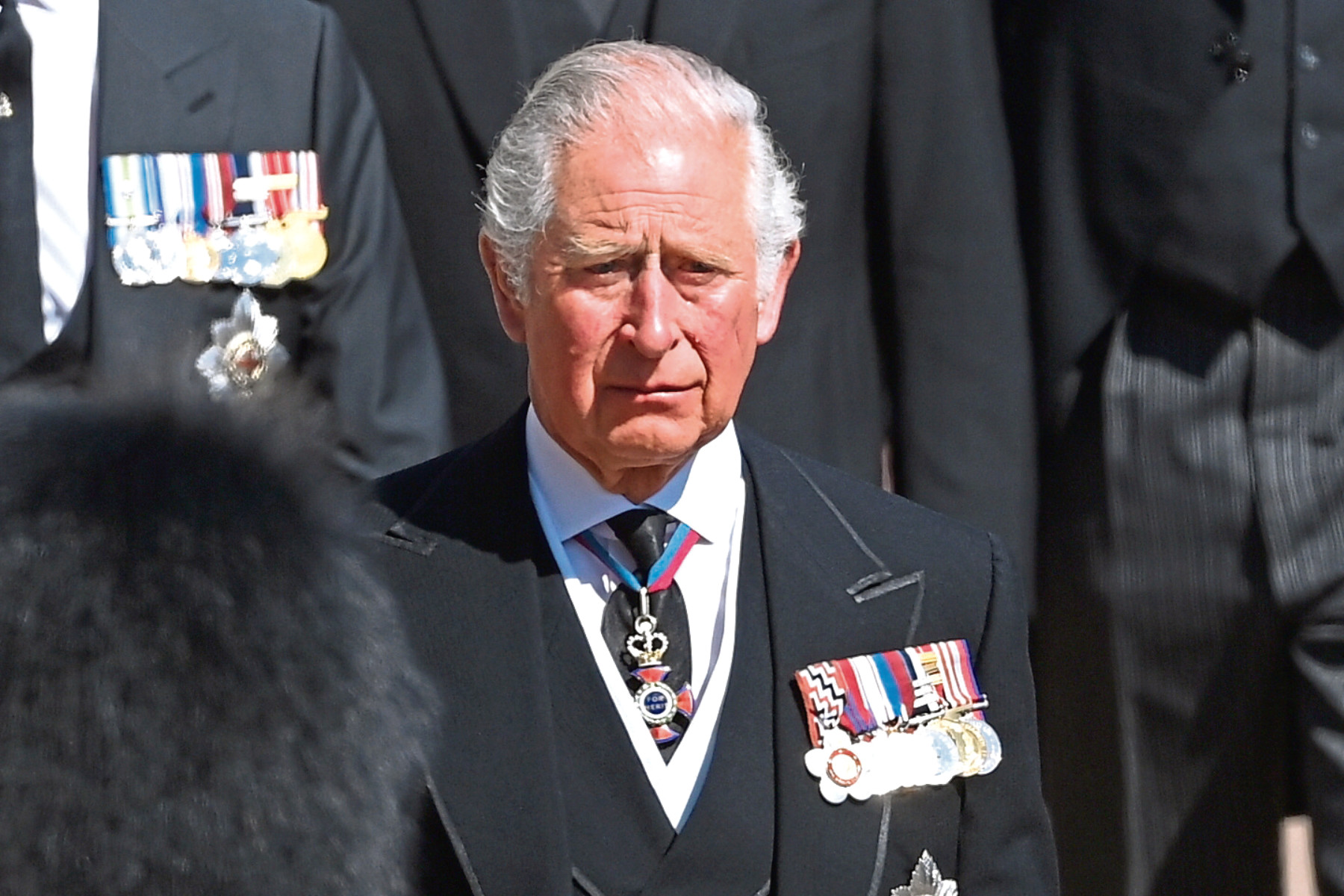 © PA
© PA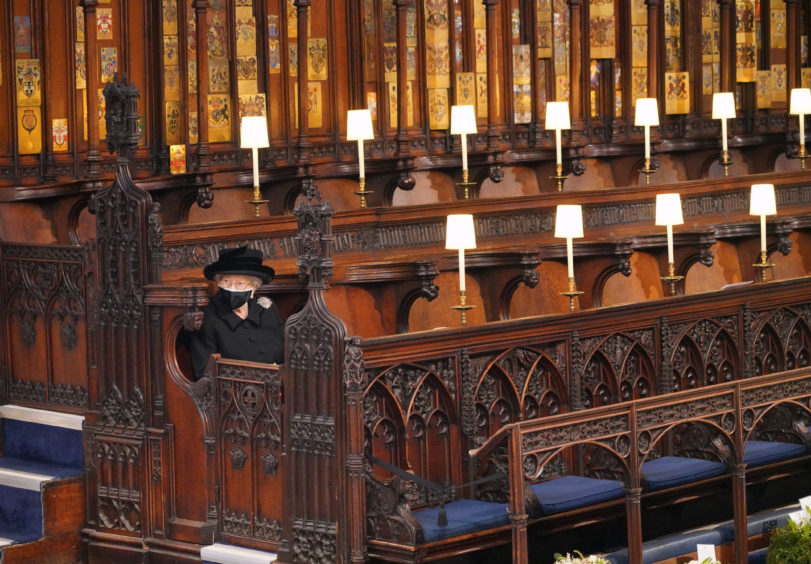 © PA
© PA